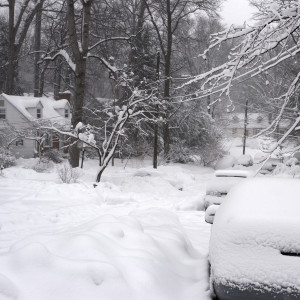Last winter, a polar vortex plunged much of the country into a deep freeze – and sent Americans running to turn up their thermostats. That, in turn, caused a surge of demand for electricity, a surge that our nation’s electricity suppliers could barely meet.
You may not give electricity much of a thought – for most Americans, you flip a switch and the lights go on. But if federal regulators get their way, that may not be the case in the future.
At issue is the concept of grid reliability, whether the supply exists to meet demand for electricity. For much of the country, grid reliability means counting on coal; today, roughly 40% of electricity in the United States comes from coal-fired generation. Yet under new regulations from the Environmental Protection Agency, many of those plants would be effectively forced out of operation to be replaced by…nobody’s really sure, to be honest. Wind, solar, and natural gas have all been suggested, but none are capable of providing reliable and affordable electricity like coal can. Meanwhile, some parts of the country are able to rely on other sources like hydropower, but for much of the country that simply isn’t an option.
The on-going necessity of coal was all too clearly demonstrated last winter, when it was coal that met that surging demand for electricity to keep the lights on – as well as to heat homes and businesses. In fact, American Electric Power, a major utility company, later reported that 90 percent of their coal plants slated for retirement were running full speed just to meet that peak demand.
Natural gas couldn’t shoulder that burden, due in part to a shortage of infrastructure to deliver gas where it was needed – this despite record-setting production in the Marcellus Shale and elsewhere. But more importantly, whereas coal’s sole purpose is to generate electricity, natural gas is also used for home heating. And when push comes to shove, heating gets priority over generation.
Now, a recent report from PJM Interconnection, the regional transmission organization (RTO) that coordinates the movement of wholesale electricity in all or parts of 13 states and the District of Columbia, has found that in the event of another polar vortex-like winter, without coal plants there could be insufficient electricity to meet peak demand. At best, that means consumers will get walloped by massive electricity bills come spring; at worst, the grid would be so stressed that blackouts could occur. That means when you flip the switch, nothing will happen.
All of this is simply ignored by environmentalists – and the federal government – who want to force the country away from coal with no regard for the consequences. Coming on the heels of the PJM report, the EPA’s regulatory plan looks like nothing more than an effort to undermine the nation’s power grid.
The facts are clear. If we want to ensure that electricity remains affordable, reliable, and abundant in the years ahead, we have to keep using coal for electricity – there’s simply no way around it. That’s why almost twenty former state Public Utility Commissioners from across the country have written to the state regulators and the EPA, stressing the importance of a diversified power portfolio – including coal – that’s capable of meeting our nation’s electricity needs.
We believe that, rather than working to kill coal under the guise of improving air quality, the EPA should admit that modern coal-fired generators are cleaner now than they ever have been – and with technology under development today, even cleaner coal plants will soon be attainable!
Instead, the EPA and their allies like the Sierra Club are rushing ahead with a foolhardy plan that will effectively undermine our ability to generate reliable and affordable electricity in America. If, next winter, you flip the switch and nothing happens, you can’t say you weren’t warned.

